How To Lose Upper Belly Fat At Home
Reduce stubborn fat on your tummy with exercise, diet, and lifestyle changes.
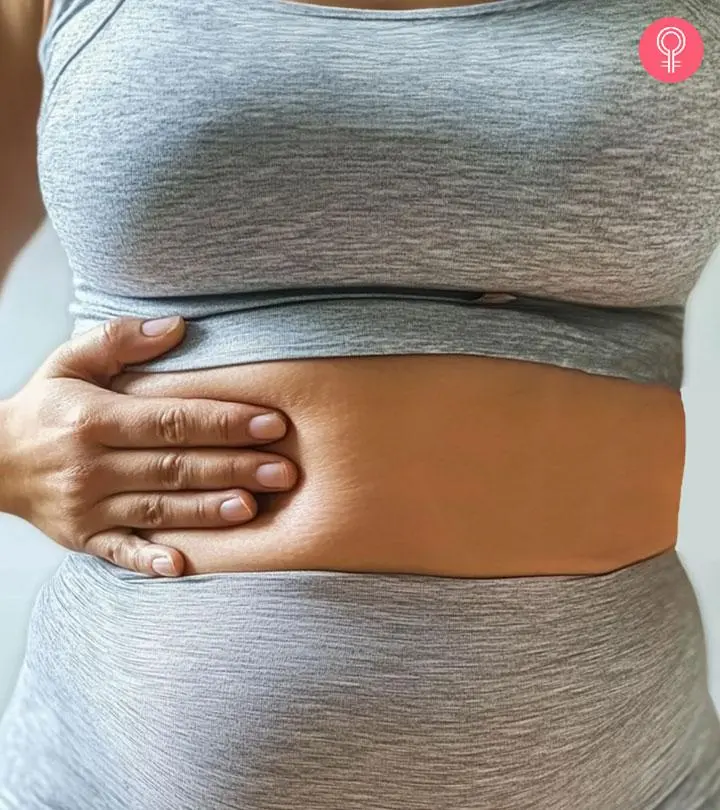
Image: Midjourney/ StyleCraze Design Team
If you are wondering how to lose upper belly fat, you are not alone. This condition is called central obesity in medical terms, and it affects both women and men as they become older. Obesity rates are highest between ages of 50 and 70 (1).
The visceral adipose tissue (VAT) surrounding the intra-abdominal organs is more commonly known as upper belly fat. Upper belly obesity is caused by genetics, poor eating habits, and an unhealthy lifestyle (1). For reducing upper abdominal fat, spot reduction is not a long-term solution. Instead, exercise, a balanced diet, and lifestyle modifications are the only ways to reduce it in a healthy way. Scroll down for more information.
In This Article
Steps To Reduce Upper Belly Fat
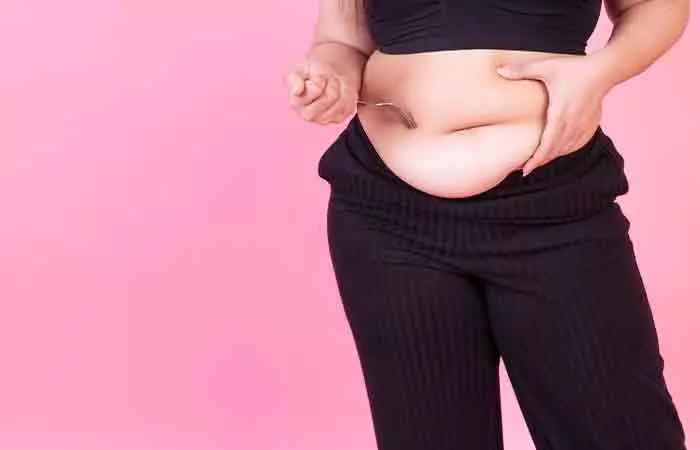
If you are looking for effective strategies for how to lose upper belly fat, you should know that weight loss from the upper abdomen requires a holistic approach – exercise, healthy diet, and focus on lifestyle changes. Before starting this process, calculate your Body Mass Index (BMI) and Waist Circumference (WC) to know your status better.
1. Exercises To Lose Upper Body Fat
These exercises do not focus on spot reduction but help strengthen your core, aid inch loss, and tone your body. So, they won’t directly reduce upper belly fat. Instead with the right diet and lifestyle practices, they will aid in creating a calorie deficit, which is essential for overall fat loss (2).
a. Surya Namaskar (Sun Salutation)
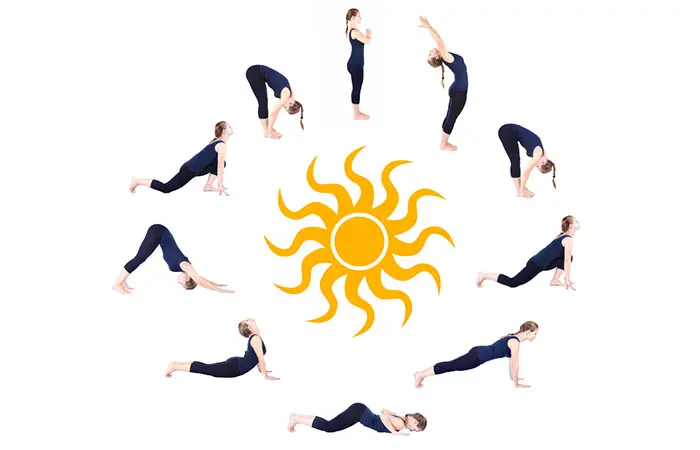
This is an excellent exercise for the entire body. It is not only effective for weight management and preventing obesity, but it also improves your cardiorespiratory health (3). Anita Bokepalli, a YouTuber, took up the challenge to perform 108 Surya Namaskars a day for 30 days and found it to be an energizing experience that improved her productivity. After 30 days, she recorded the results thus: “I ended up losing 3 inches on the waist, 4 inches on the hips, and 6 kgs body weight (i).”
There are 12 poses in Sun Salutation.
Target: Whole body
Steps
- Stand at the end of the mat, keeping your feet together and your spine straight. Puff your chest out and roll your shoulders to relax them.
- Breathe in, lift your hands to your sides, and join your palms in front of your chest in a prayer pose while exhaling.
- Inhale, lift your arms, and stretch them back completely. Make sure that your biceps touch your ears.
- Exhale and bend forward from the waist while keeping your spine straight. Try to touch your head to your knees and place both palms on the ground beside your feet. Try to keep your knees straight.
- Breathe out and push your right leg back as far as possible, touching your knee to the floor. Bend your head back and lookup. Your left leg should be between your palms, folding at the knee and perpendicular to the floor.
- Breathe in and push your left leg back and align your whole body.
- Slowly press your knees together, breathe out, push your hips back slightly, and rest your chin and chest on the floor.
- Slide forward until your chest and chin are up in a cobra pose and your elbows are bent. Your shoulders should be away from your ears. Hold this posture for 5 seconds.
- Breathe out and lift your hips and tailbone up to form an inverted-V position. Both your feet should be flat on the floor and your knees should be straight. Try to look at your navel while in this position.
- Breathe in and pull your right leg between your palms. Your left leg should be touching the floor. Keep your hips down and lookup.
- Bring your left leg between your palms. Your palms should be touching the floor and your head should be at your knees.
- Breathe in, pull your hands up, and bend backward. Push your hips out a bit.
- Breathe out and bring down your arms. Straighten your body and relax and feel the stretch in all parts of your body.
b. Plank Hold
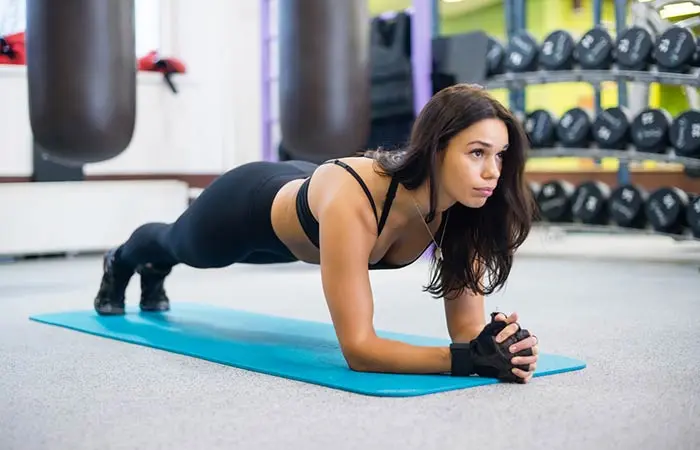
Abdominal planks aid in fat burning and tone your abdominal muscles. A study found that doing plank exercises for 4 weeks may help reduce body fat by 2.98% in middle-aged men. It also found that their body weight increased. However, this happened because they gained more muscle (4). This gain may actually help you appear more toned.
Target: Upper belly, thighs, and arms.
Steps
- Lie down on your stomach with your knees bent and feet on the ground.
- Bend your elbows and place your forearms on the ground. Align your elbows with your shoulders.
- Align your feet with your hips.
- Tighten your core and glute muscles. Lift your abs and hips off the ground. They should be aligned with your shoulders.
- Flex your hips forward and hold this position for 30 seconds.
- Practice these 3 rounds with 30 seconds of hold.
c. Bicycle Crunches
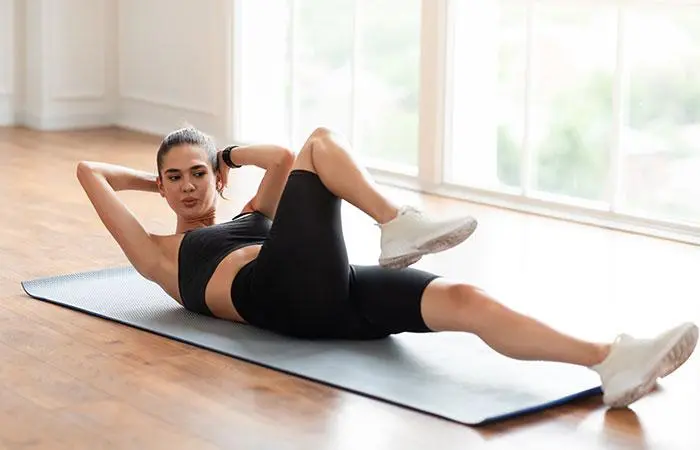
Bicycle crunches are a great core exercise that can help strengthen and tone the abdominal muscles. When combined with a calorie deficit (burning more calories than consumed), the exercise may aid in reducing total body fat, including the upper belly area.
Target: Abdomen, hips, and obliques.
Steps
- Lie down on your back. Relax your entire body.
- Place your hands behind your head. Interlock them just above your neck.
- Bend both the knees and bring them close to your belly.
- Lift your shoulders and head. Straighten your left leg and bring your left elbow close to your right knee. Bring your left leg back to your belly.
- Simultaneously, straighten your right leg and bring your right elbow close to your left knee. Bring your right knee back to your belly. This completes one set
- Do 2 sets of 20 reps each.
 Quick Tip
Quick Tipd. Russian Twist
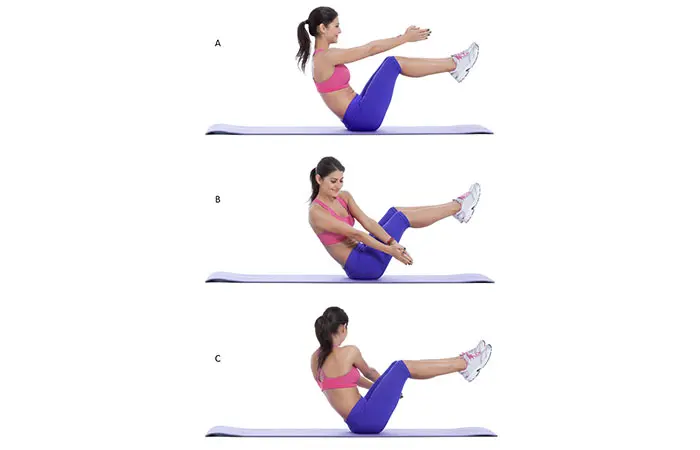
Russian Twists primarily target the core and obliques. Strengthening these muscles may help build definition in the upper belly area, giving it a tighter and firmer look.
Target: Core, obliques, and spine.
Steps
- Sit on a yoga mat with your knees bent and feet on the floor.
- Tighten your core, lean back, and lift both your legs at a 45° angle with the floor while bending the knees slightly.
- Lift your hands in the front and slowly twist your upper body to one side. Your legs should be fixed at the 45° angle.
- Twist to the other side. You can cross your ankles to maintain your balance. This completes one rep.
- Do 3 sets of 12 reps each.
 Quick Tip
Quick Tipe. Leg Raise
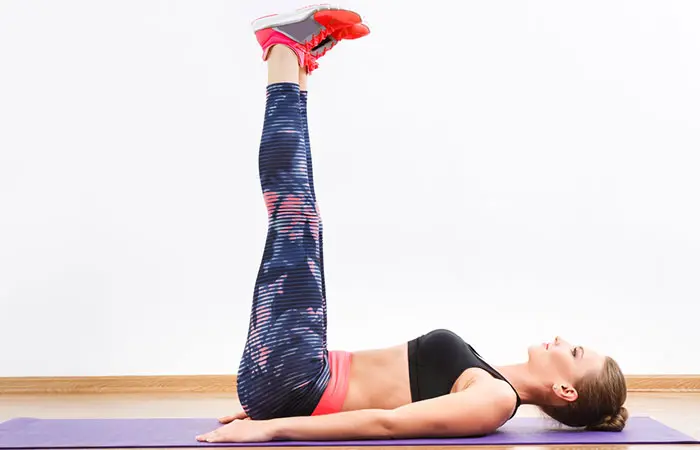
During leg raises the core and abdominal muscles are activated to lift the legs. When performed consistently, this helps tone and strengthen the area, contributing to overall abdominal definition.
Target: Abdomen and core.
Steps
- Lie down on your back.
- Place both your hands – palms facing down – on the ground beside your body. Your legs should be straight.
- Lift both your legs straight towards the ceiling until your butt comes off the floor. You can support your butt by placing your palms beneath it.
- Lower your legs slowly but do not touch the ground completely.
- Do 3 sets of 20 reps each.
You can also try other exercises like mountain climbers and sit-ups to lose abdominal and upper belly fat.
Apart from these exercises, try adding a few cardio workouts to your routine. They include activities, such as running, cycling, swimming, and brisk walking. These exercises elevate your heart rate and boost calorie expenditure, which triggers the body to tap into its fat stores, including fat in the abdominal area. Cardio workouts not only trim your waistline but also enhance your overall health by reducing the risk of chronic diseases (5).
However, remember that consistency is key. You need to commit to regular cardio sessions that add up to at least 150 minutes per week to yield noticeable results. Make sure to pair these exercises with a healthy and balanced diet for best results.
2. Eat Your Way To A Slimmer You
Diet is also a major factor that can help you get back in shape. Reducing daily calorie intake while focusing on nutrient-dense foods, can promote weight loss and improve overall health (2). Opt for fiber-rich foods like whole grains, beans, fruits, and vegetables and lean proteins such as chicken, fish, tofu, or legumes. Both these food groups are known to promote satiety (6) (7). This means they can help keep you feeling full for longer periods, reducing the urge to snack on unhealthy options. This, in turn, reduces your overall calorie intake, thereby aiding weight loss, which is needed for a slimmer upper belly.
Additionally, protein also helps increase thermogenesis, which is the process by which your body generates heat and energy from digesting food. This results in more calories being burned even when at rest. A higher protein diet may help some people build muscle mass, which is important for maintaining a healthy metabolism (7). So, a proper diet can go a long way in keeping you slim and healthy. Eat frequently, but consume smaller meals rather than eating large meals and burdening your digestive system.
A study conducted at the Medical University Vienna on 20 obese women proved that following a calorie-deficit diet along with aerobic exercises can reduce body fat (8).
Jesse Feder, RDN, says, “In order to create a caloric deficit, I highly recommend you make changes in both your diet and activity level. I would start off by making a very simple diet change of reducing the portion sizes of your meals. This is typically the easiest change to make for people since they can eat the same foods but just less of them throughout the day.”
Here are some changes you can make in your diet to lose upper belly bulge:
- Include protein-rich foods in every meal. Your snacks should be rich in good-quality protein to curb binging (7).
- Replace grains with whole grains at least 1-2 times a day, as they contain more fiber that will keep you full longer (6). You can also bulk up on fiber-rich foods and have 1-2 servings of fruits on a daily basis.
- Include healthy fats in your diet, like nuts, seeds, and clarified butter. These are medium-chain fatty acids that are known to promote a feeling of fullness when added to a low-calorie diet (9).
- Replace high-calorie foods with low-calorie, nutrient-rich foods that are healthy and energize your body.
- Avoid oily and junk food like chips, baked products, cookies, and sweets. Replace them with salads made of fresh fruits and vegetables.
- Reduce salt intake. Research suggests that excessive sodium consumption is linked to leptin resistance (10). Leptin is a hormone that helps regulate appetite and metabolism. When the body becomes resistant to leptin, it can lead to overeating and weight gain (11).
- Water is the best beverage. Instead of reaching for aerated sodas or energy drinks, drink plain water. Water cleanses your body and flushes out all the toxins, keeping you slim and hydrated.
- Practice portion control to lose weight and eat a healthy diet.
There are certain foods to avoid/limit when you are trying to lose upper belly fat. Avoid oily and junk food like chips, baked products, cookies, and sweets. Replace them with salads made of fresh fruits and vegetables.
Foods To Avoid
- Processed Foods: They are loaded with unhealthy fats and added sugars. This makes them calorie-dense and nutrient-poor. When you consume such foods and your body digests them, it eventually enters a phase where it starts cleaning up waste and repairing itself. This can show up as stomach cramps, headache, anxiety, or other unpleasant feelings. Instead of recognizing these symptoms as a sign of healing, you may mistake them for hunger or low blood sugar. You may end up eating again to feel better, even though your body does not actually need more food at that moment. This pattern can create a cycle of craving more unhealthy foods that cause weight gain and fat accumulation (12).
- Sugary Snacks And Drinks: They increase blood sugar levels, which are linked to increased hunger (13). This leads to overeating and increased calorie intake. When more energy is consumed than is needed, the excess calories are stored as fat, leading to weight gain over time, even in the abdominal area (14).
- Trans Fats: They increase bad cholesterol and cause belly fat. Research suggests that the intake of trans fats activates inflammatory markers like C-reactive protein (CRP). This may lead to obesity, including increased visceral fat (fat stored around internal organs, including the belly area) (15) (16). They are present in several baked goods and fried foods.
- Refined Carbohydrates: Foods high in fat and sugar, such as spaghetti and white bread, can raise blood sugar levels. After the initial spike, levels can drop quickly, leading to a crash that makes you feel hungry again. This may lead to overeating. Over time, this cycle can cause you to eat more calories than your body needs, promoting weight gain (17).
3. Change Your Lifestyle
When it comes to reducing upper belly fat and managing your weight, a few lifestyle changes can go a long way in making a difference.
According to Jesse Feder, RDN, “Increasing your daily activity level can burn extra calories and help get you into that caloric deficit. I always recommend to my clients/patients to go on daily 30-45 minute walks. Unfortunately, you cannot specifically target which area you lose fat from. Everyone loses fat from different areas first. You will still notice a difference and be able to lose that upper belly fat if you stay consistent with these changes.”
Here are a few changes that you can incorporate:
a. Cope With Stress: Stress leads to cravings for salt and sugar. A study on rats proved that fatty foods (lard) reduce stress by regulating hypothalamic-pituitary-adrenal responses (18). This explains the aforementioned cravings and the weight gain they lead to.
Further, the body’s stress response also involves a hormone called cortisol, commonly called the stress hormone. When cortisol is released, it can make you feel hungrier and increase cravings for tasty, calorie-dense foods. Indulging in such foods over time may lead to weight gain (19).
Learning stress management and how to deal with anxiety can cut off these triggers and help you maintain a healthy lifestyle. Eat foods that are rich in tryptophan like chicken, soya bean, nuts, bananas. Tryptophan is a precursor of serotonin (a feel-good hormone). Thus, eating tryptophan-rich foods can help improve your mood (20).
You can also practice deep breathing exercises, meditate, and walk for 30 minutes daily to cut back your stress.
b. Sleep At Least 7 Hours In A Day
Peaceful sleep is an important modulator of neuroendocrine function, which includes important body functions like metabolism and appetite control. Inadequate sleep has been found to be associated with increased hunger, appetite, and craving for calorie-dense, high-carbohydrate content food (21). This may lead to overeating, which causes weight gain. Hence, aim to sleep at least 7 hours a day. To achieve it, establish a consistent bedtime routine by going to bed and waking up at the same time every day, even on weekends. Create a sleep-friendly environment by keeping your bedroom cool, dark, and quiet.
c. Limit Alcohol Intake
Research suggests that alcohol can contribute to fat accumulation, particularly around the belly (22). Therefore, it is important to avoid alcohol. If you cannot do so, limit your intake to special occasions or set specific limits like one drink per week. It is also best to opt for lighter alcohol options like wine or spirits mixed with soda water rather than sugary cocktails.
This is all you need to know about how to lose upper belly fat. Remember that upper belly fat is not only unhealthy but can also affect your self-image and mental health. If you are wondering what causes upper belly fat, check out the next section.
Key Takeaways
- Weight gain in the upper abdomen can result from physical and mental stress.
- Genetics, poor eating habits, and an unhealthy lifestyle all contribute to upper-belly obesity.
- Upper abdominal weight gain may be due to a diet rich in processed foods, sweets, and harmful fats.
- Exercise, proper diet, and adequate sleep may help in reducing upper-belly fat.
Causes Of Upper Abdominal Weight Gain
There could be multiple reasons for putting on weight in the upper belly region. The most common causes are (23):
- Unhealthy eating habits
- A sedentary lifestyle with no physical exercise
- Lack of sleep and bad sleep quality
- Leading a stressful lifestyle that affects your physical and mental health
- Advancing age with a slow metabolic rate
Infographic: Boat Pose To Lose Upper Belly Fat
The boat pose is a seated asana and one of the best ways to strengthen your core. It works great on the abdominal muscles and deep hip flexors as well. Raising the legs kicks the abdominal muscles into action and strengthens them by burning belly fat. Check out the infographic below to learn how to perform the boat pose to lose upper belly fat. Illustration: StyleCraze Design Team
If you want to shed your stubborn upper belly fat, you must establish realistic goals and work hard to achieve them. Spend a few hours daily working on your upper abs. When it comes to losing upper body fat, the cardinal rule is 80% diet and 20% exercise. All you need to do is focus on simple lifestyle modifications like following healthy eating habits and tweaking your sedentary lifestyle. Work toward your health and fitness goals efficiently under the guidance of a healthcare professional and a nutritionist.
Frequently Asked Questions
Why is my upper stomach bigger than my lower stomach?
Upper belly fat is usually the result of the accumulation of visceral fat around your abdomen area. Stress, an unhealthy lifestyle, lack of sleep, and hormonal weight gain can all contribute to weight gain in the upper stomach.
What is the best exercise for the upper abdomen?
There is no particular exercise for spot reduction. To reduce your upper abdomen, you need to focus on whole-body and core exercises like sun salutations, plank holds, bicycle crunches, side crunches, and twist crunches. You can also focus on cardio exercises to lose belly fat.
Why is my upper belly so big and hard?
If your stomach feels big and hard often, it could be due to gas, a food intolerance, or inflammatory bowel disease.
Illustration: How To Lose Upper Belly Fat At Home – Causes And Solutions
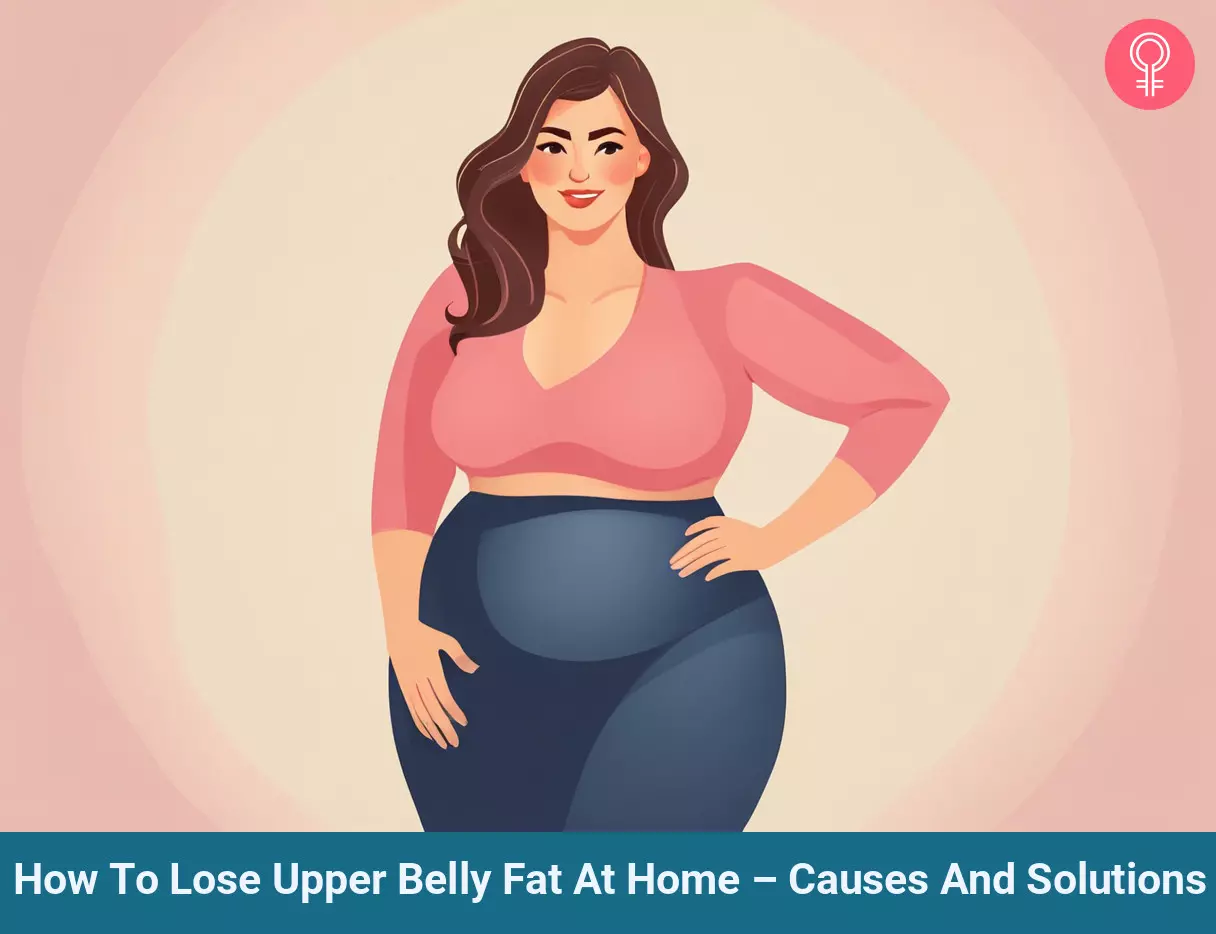
Image: Stable Diffusion/StyleCraze Design Team
Learn how to lose upper belly fat at home with the 10 simple exercises shown in this video! Get fit and healthy in the comfort of your own home. Watch now to get started.
Personal Experience: Source
StyleCraze's articles are interwoven with authentic personal narratives that provide depth and resonance to our content. Below are the sources of the personal accounts referenced in this article.
(i) I did 108 Surya Namaskar for 30 Days. Here’s what happened.https://www.youtube.com/watch?v=5O0a0VqPN7Q
References
Articles on StyleCraze are backed by verified information from peer-reviewed and academic research papers, reputed organizations, research institutions, and medical associations to ensure accuracy and relevance. Read our editorial policy to learn more.
- Definitions Classification and Epidemiology of Obesity Endotext U.S. National Library of Medicine National Institutes of Health.
https://www.ncbi.nlm.nih.gov/books/NBK279167/ - Optimal Diet Strategies for Weight Loss and Weight Loss Maintenance, U.S. National Library of Medicine, National Institutes of Health.
https://pmc.ncbi.nlm.nih.gov/articles/PMC8017325/ - Acute effects of Surya Namaskar on the cardiovascular & metabolic system, Journal of Bodywork and Movement Therapies, U.S. National Library of Medicine, National Institutes of Health.
https://pubmed.ncbi.nlm.nih.gov/21665111/ - Effects of High Intensity Plank Exercise on Physical Fitness and Immunocyte Function in a Middle-Aged Man: A Case Report, U.S. National Library of Medicine, National Institutes of Health.
https://pmc.ncbi.nlm.nih.gov/articles/PMC8399219/ - Physical activity, exercise, and chronic diseases: A brief review, Sports Medicine and Health Science, U.S. National Library of Medicine, National Institutes of Health.
https://www.ncbi.nlm.nih.gov/pmc/articles/PMC9219321/ - The effect of fiber on satiety and food intake: a systematic review, U.S. National Library of Medicine, National Institutes of Health.
https://pubmed.ncbi.nlm.nih.gov/23885994/ - Protein, weight management, and satiety, U.S. National Library of Medicine, National Institutes of Health.
https://pubmed.ncbi.nlm.nih.gov/18469287/ - Fat loss depends on energy deficit only, independently of the method for weight loss, Annals of Nutrition and Metabolism, U.S. National Library of Medicine, National Institutes of Health.
https://pubmed.ncbi.nlm.nih.gov/18025815/ - Chapter 15 Fats and Satiety, U.S. National Library of Medicine, National Institutes of Health.
https://www.ncbi.nlm.nih.gov/books/NBK53550/ - Dietary Sodium, Adiposity, and Inflammation in Healthy Adolescents, U.S. National Library of Medicine, National Institutes of Health.
https://pmc.ncbi.nlm.nih.gov/articles/PMC3934330/ - Leptin and Obesity: Role and Clinical Implication, U.S. National Library of Medicine, National Institutes of Health.
https://pmc.ncbi.nlm.nih.gov/articles/PMC8167040/ - The Hidden Dangers of Fast and Processed Food, U.S. National Library of Medicine, National Institutes of Health.
https://pmc.ncbi.nlm.nih.gov/articles/PMC6146358/ - Insulin levels, hunger, and food intake: an example of feedback loops in body weight regulation, U.S. National Library of Medicine, National Institutes of Health.
https://pubmed.ncbi.nlm.nih.gov/3894001/ - The Importance of Energy Balance, U.S. National Library of Medicine, National Institutes of Health.
https://pmc.ncbi.nlm.nih.gov/articles/PMC6003580/ - Trans Fatty acids and systemic inflammation in heart failure, U.S. National Library of Medicine, National Institutes of Health.
https://pmc.ncbi.nlm.nih.gov/articles/PMC1201402/ - C-Reactive Protein Causes Adult-Onset Obesity Through Chronic Inflammatory Mechanism, U.S. National Library of Medicine, National Institutes of Health.
https://pmc.ncbi.nlm.nih.gov/articles/PMC7044181/ - Return of hunger following a relatively high carbohydrate breakfast is associated with earlier recorded glucose peak and nadir, U.S. National Library of Medicine, National Institutes of Health.
https://pmc.ncbi.nlm.nih.gov/articles/PMC4204795/ - Choice of lard, but not total lard calories, damps adrenocorticotropin responses to restraint, Endocrinology, U.S. National Library of Medicine, National Institutes of Health.
https://pubmed.ncbi.nlm.nih.gov/15705773/ - Stress, cortisol, and other appetite-related hormones: Prospective prediction of 6-month changes in food cravings and weight, U.S. National Library of Medicine, National Institutes of Health.
https://pmc.ncbi.nlm.nih.gov/articles/PMC5373497/ - Food-derived serotonergic modulators: effects on mood and cognition, Nutrition Research Reviews, U.S. National Library of Medicine, National Institutes of Health.
https://pubmed.ncbi.nlm.nih.gov/24134856/ - Brief communication: Sleep curtailment in healthy young men is associated with decreased leptin levels, elevated ghrelin levels, and increased hunger and appetite, Annals of Internal Medicine, U.S. National Library of Medicine, National Institutes of Health.
https://pubmed.ncbi.nlm.nih.gov/15583226/ - Association between Alcohol Intake and Abdominal Obesity among the Korean Population, U.S. National Library of Medicine, National Institutes of Health.
https://pmc.ncbi.nlm.nih.gov/articles/PMC2984859/ - Risk Factors and Prevalence of Abdominal Obesity among Upper-Secondary Students, U.S. National Library of Medicine, National Institutes of Health.
https://pmc.ncbi.nlm.nih.gov/articles/PMC6572187/
Read full bio of Madhu Sharma
- Jesse Feder, RDN/LDN, is a Clinical Dietitian at the Memorial Regional Hospital. He is also a certified by the American College of Sports Medicine as a personal trainer (ACSM-CPT) and the National Strength and Conditioning Association as a Certified Strength and Conditioning Specialist (NSCA-CSCS).
 Jesse Feder, RDN/LDN, is a Clinical Dietitian at the Memorial Regional Hospital. He is also a certified by the American College of Sports Medicine as a personal trainer (ACSM-CPT) and the National Strength and Conditioning Association as a Certified Strength and Conditioning Specialist (NSCA-CSCS).
Jesse Feder, RDN/LDN, is a Clinical Dietitian at the Memorial Regional Hospital. He is also a certified by the American College of Sports Medicine as a personal trainer (ACSM-CPT) and the National Strength and Conditioning Association as a Certified Strength and Conditioning Specialist (NSCA-CSCS).
Read full bio of Tanya Choudhary
Read full bio of Arshiya Syeda
Read full bio of Moksha Gandhi






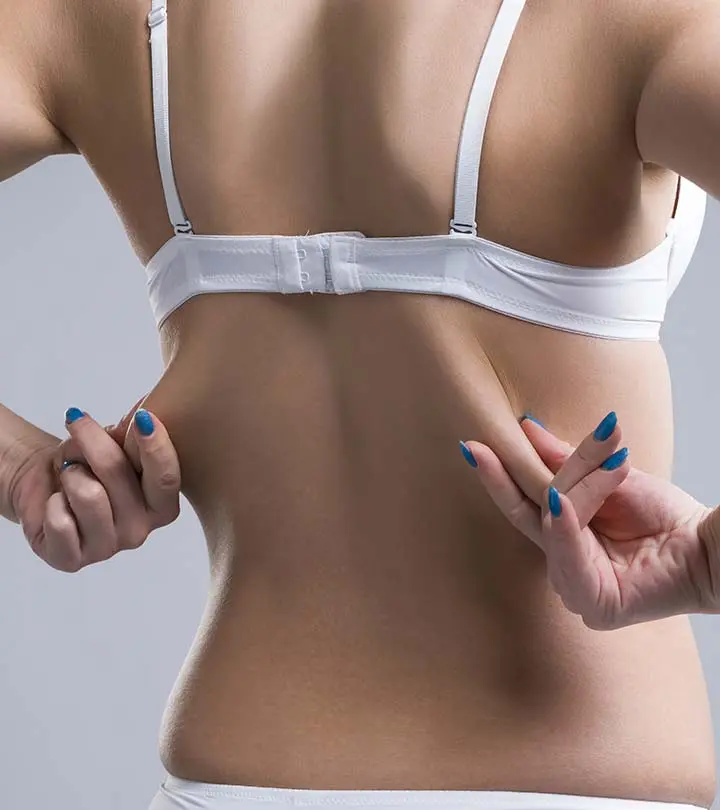

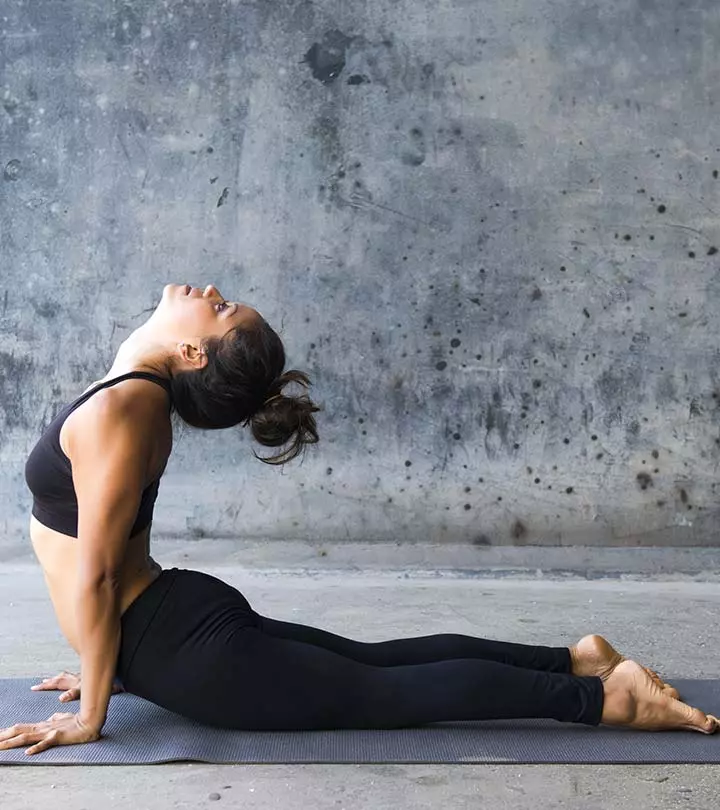
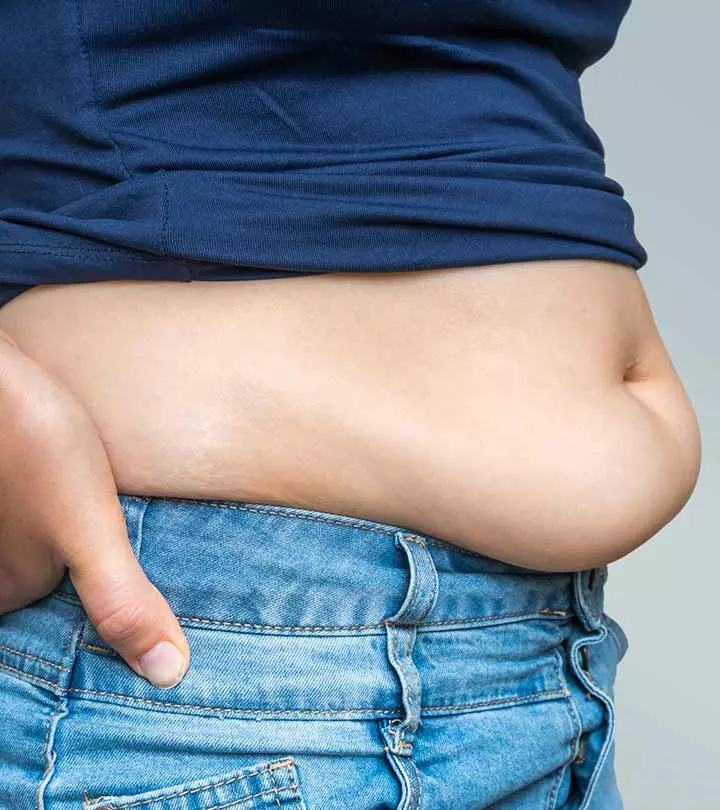
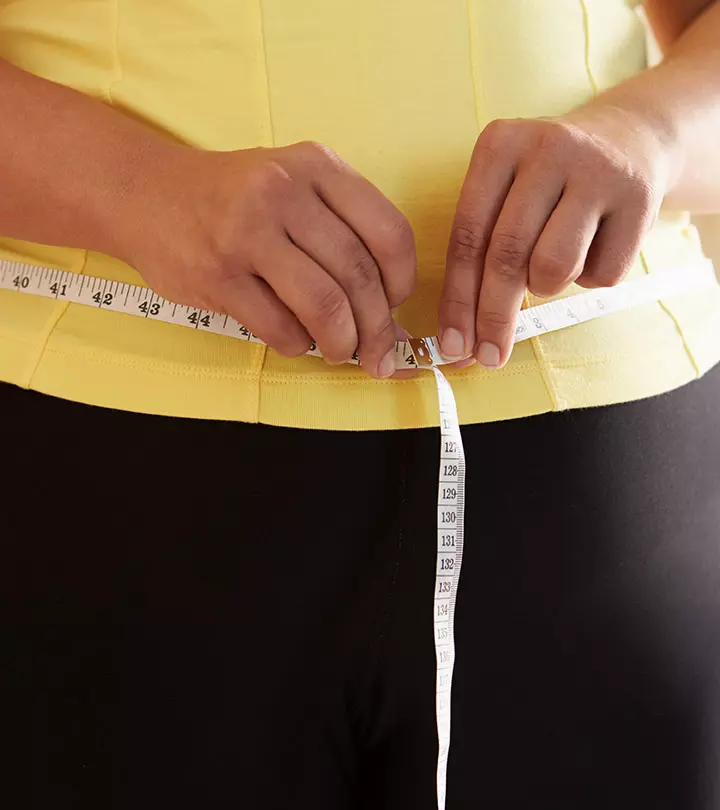

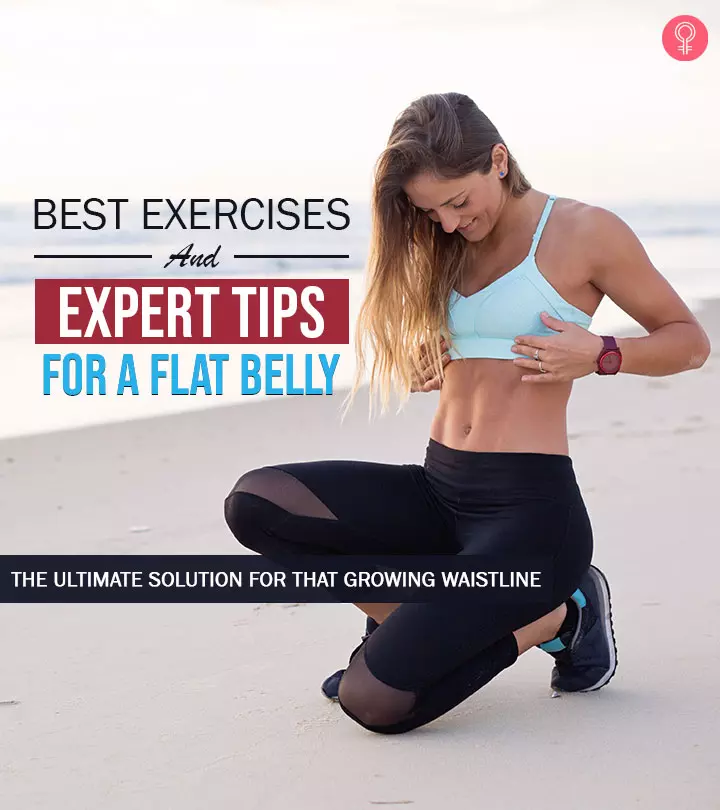
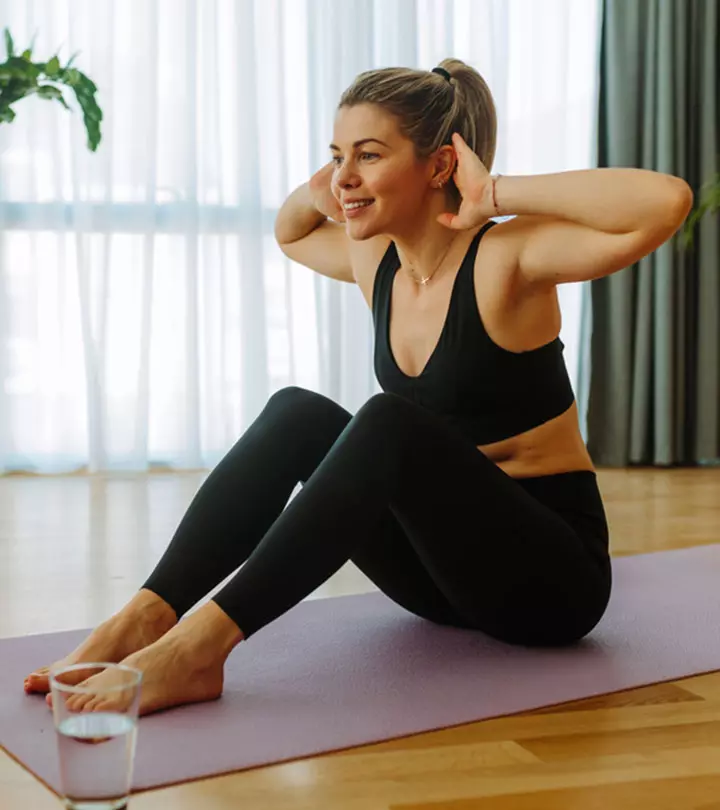

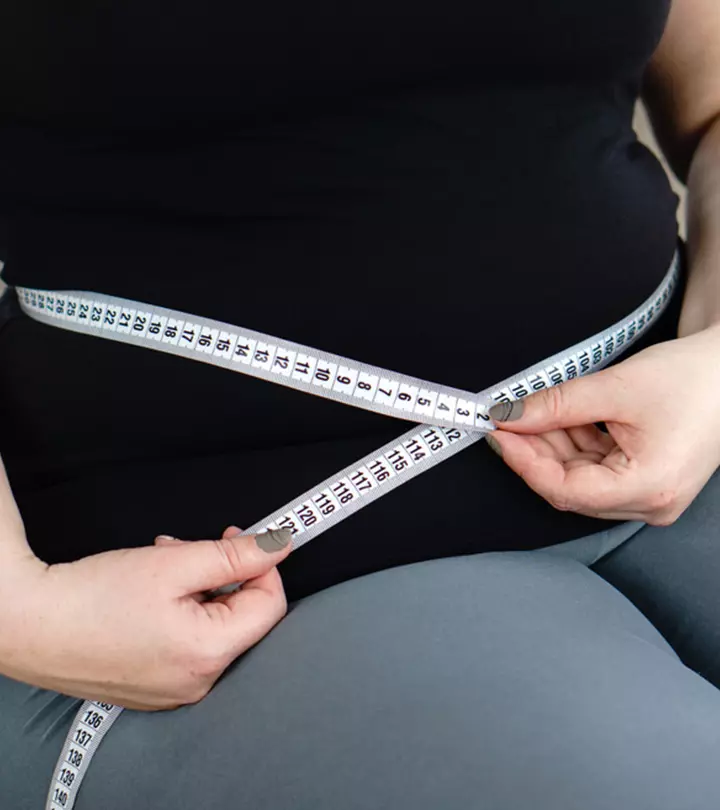

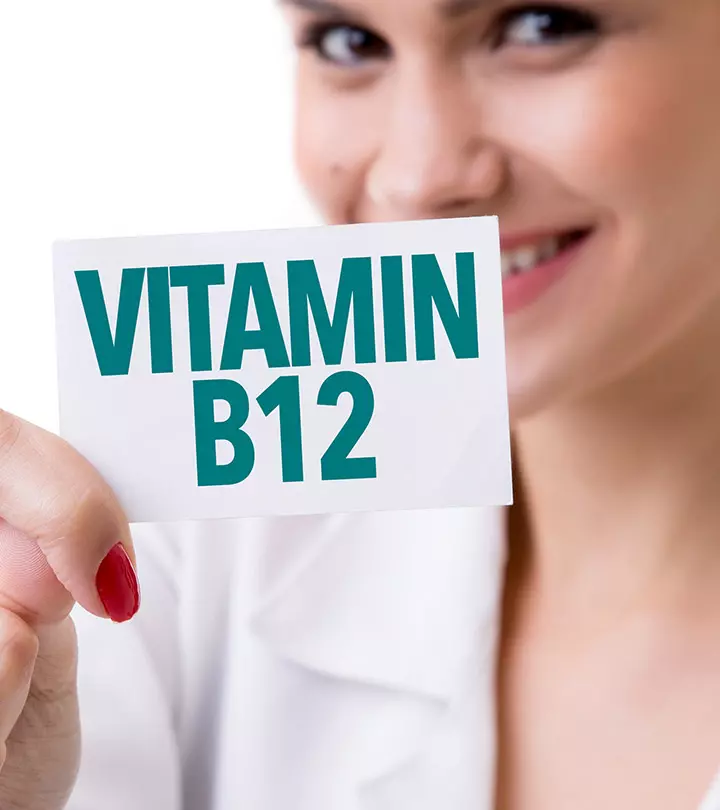
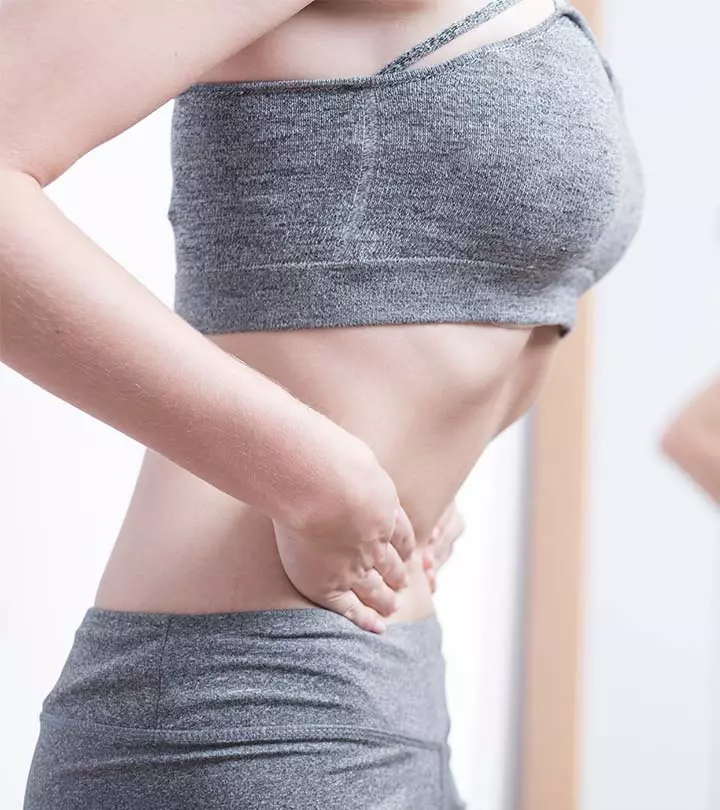

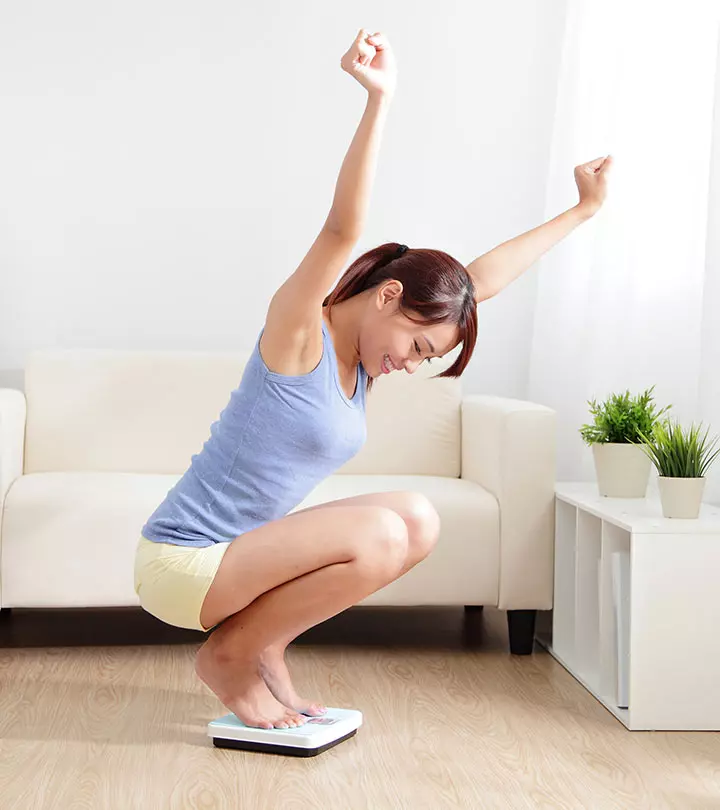
Community Experiences
Join the conversation and become a part of our empowering community! Share your stories, experiences, and insights to connect with other beauty, lifestyle, and health enthusiasts.